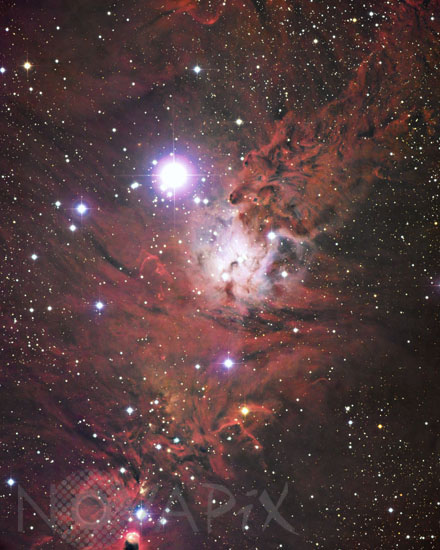Photo Agency - Astronomy - Space - Nature

NGC 2264 and S Monocerotis
author: Anglo-Australian Observatory/David Malin Images/Novapix
reference: a-neb22-64032
Image Size 300 DPI: 40 * 51 cm
The region around the 4.7 magnitude star S Mon is a fascinating mixture of red fluorescent hydrogen and dark, obscuring dust lanes. Some dust patches are close enough to bright stars to reflect light from them; these appear blue for the same reason that the day-time sky is blue - because some of the interstellar particles preferentially scatter blue light. Some of the wispy tendrils of nebulosity are Herbig-Haro objects, jets of matter ejected from newly-formed stars still hidden within the nebula. About 250 stars have been recognised as members of NGC 2264 which is at a distance of about 2700 light years.
Contact : Stéphane Aubin +33-(0)9-51-26-53-76
© Novapix - All rights reserved


